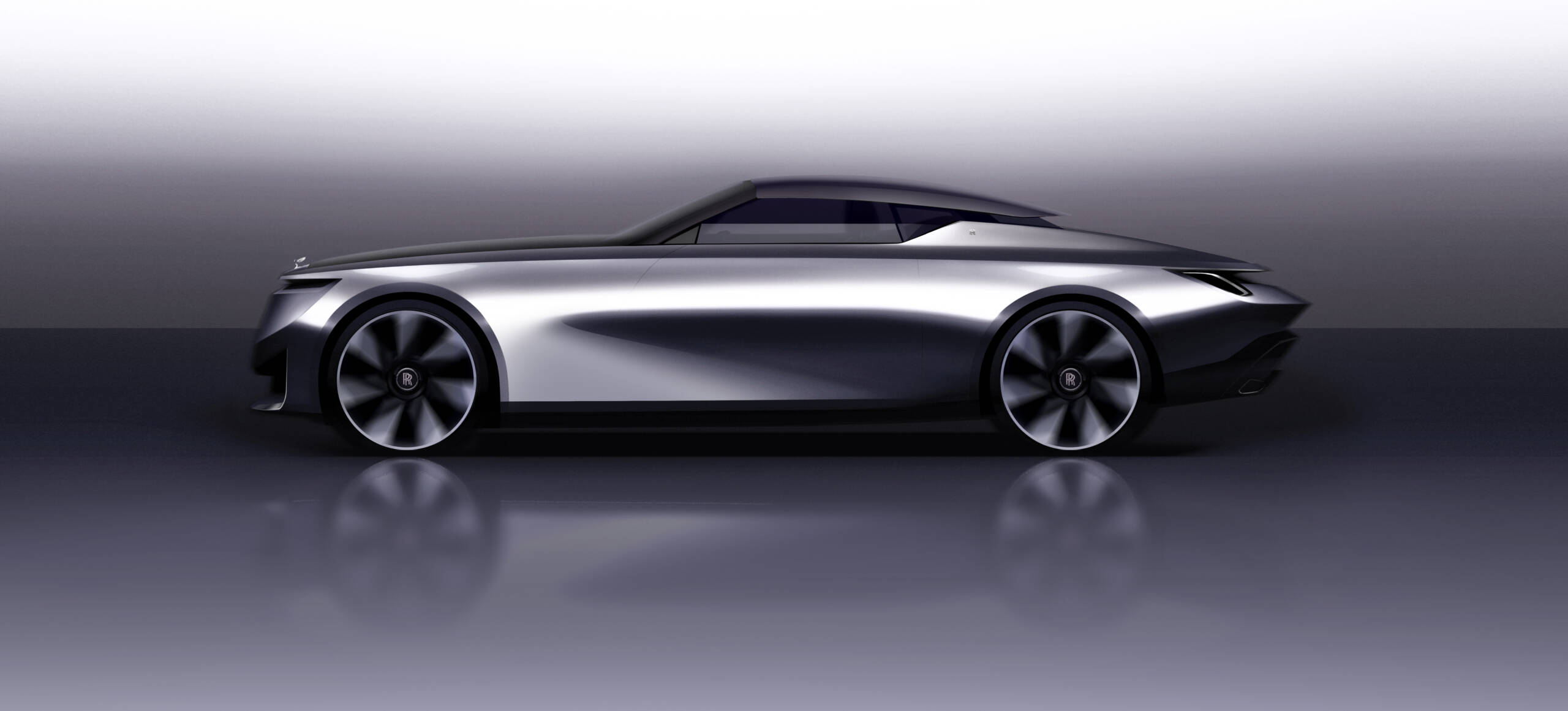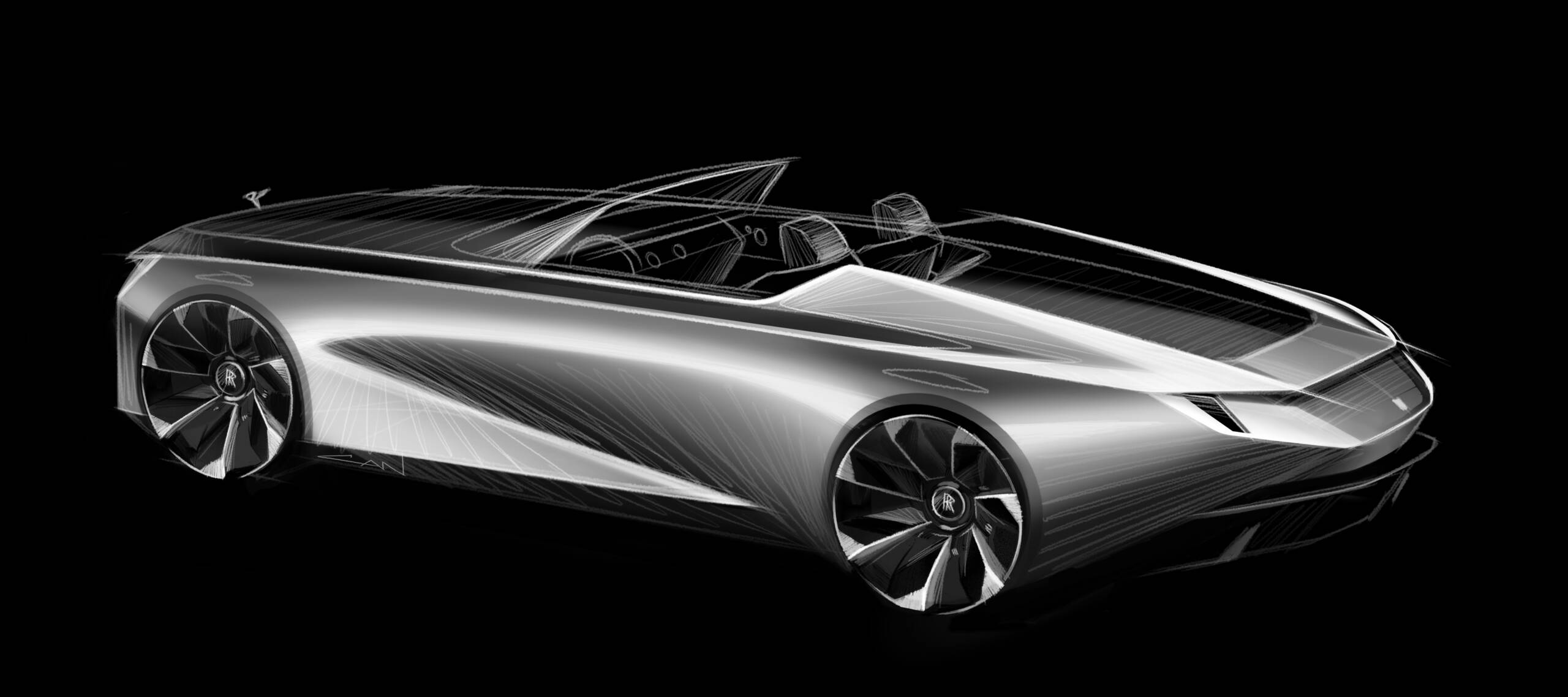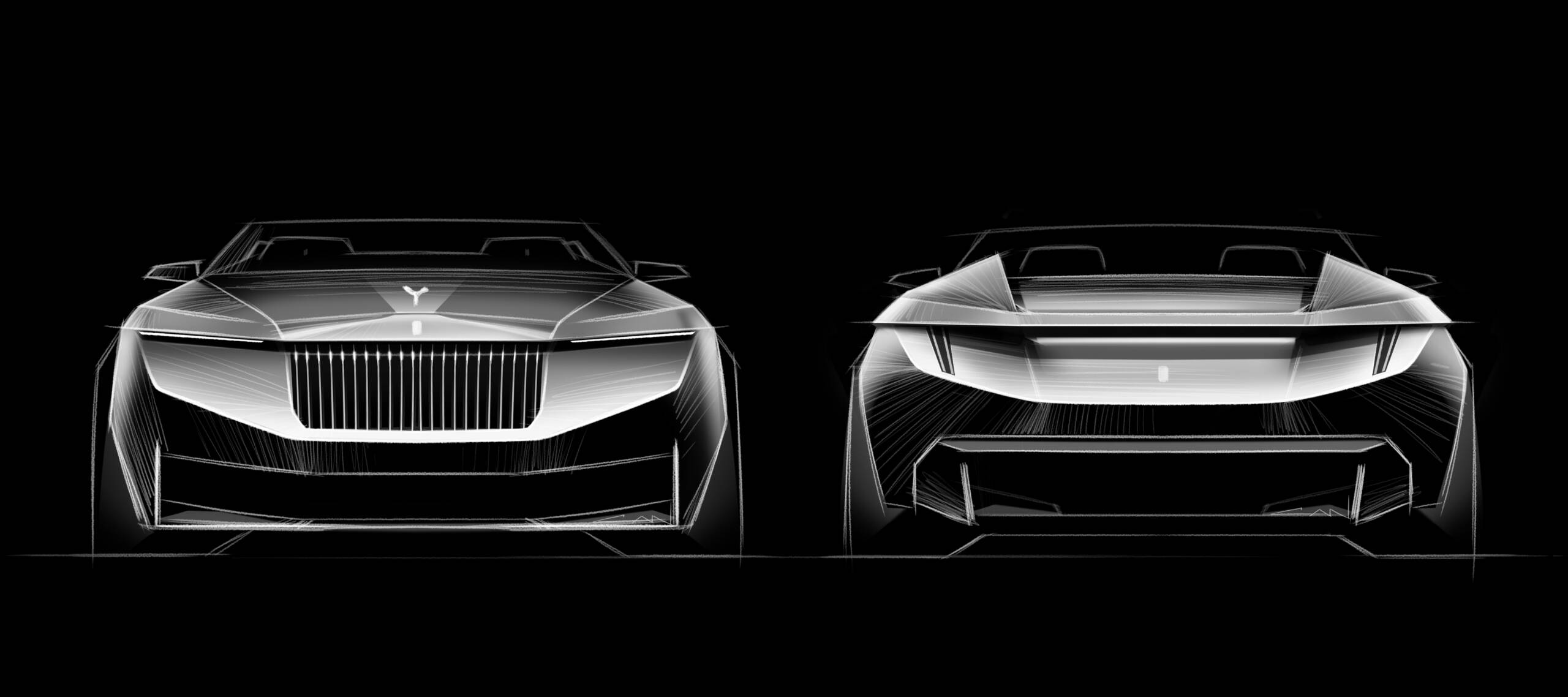
ROLLS-ROYCE REVEALS DROPTAIL COACHBUILD ROADSTER: APPLIED ART IN MOTION
Today, Rolls-Royce is proud to present Droptail: the third chapter in a remarkable story that reflects the absolute pinnacle of the Rolls-Royce brand, and by extension the super-luxury sector.
ROLLS-ROYCE REVEALS DROPTAIL COACHBUILD ROADSTER: APPLIED ART IN MOTION
ROLLS-ROYCE COACHBUILD: APPLIED ART
As a House of Luxury, Rolls-Royce Motor Cars constantly seeks to create personal and deeply meaningful luxury products that reflect the marque’s clients’ ambitions and personal codes of luxury. Rolls-Royce’s unparalleled Bespoke capabilities enable clients to bring these desires to life through the commission of beautiful, handcrafted and truly individual Rolls-Royce motor cars.
A small group of exceptional individuals wish to elevate this remarkable, deeply personal experience even further and move beyond the canvas of existing Rolls-Royce products. These highly ambitious and discerning clients seek the opportunity to work directly with the marque’s designers, engineers and craftspeople to create completely unique Rolls-Royce motor cars beyond the brand’s product portfolio, participating in every stage of their development. This is Rolls-Royce Coachbuild.
Creatives within Rolls-Royce Coachbuild approach the motor car as an elevated expression of applied art – the discipline of creating something beautiful, intellectually stimulating and emotionally resonant, that has a clear and single purpose.
The renaissance of contemporary coachbuilding began in 2017 with ‘Sweptail’, a bold two-door coupé created in response to a client’s wish to reprise the art of coachbuilding in partnership with Rolls-Royce. With its sharply tapering outline and full-length glass roof, it can be characterised as the Extrovert. It was followed by the unveiling of Boat Tail in 2021, a highly social open-top that amplified its clients’ love of hosting – a motor car that unashamedly represents the Hedonist.
Today, Rolls-Royce is proud to present Droptail: the third chapter in a remarkable story that reflects the absolute pinnacle of the Rolls-Royce brand, and by extension the super-luxury sector. For Droptail, the focus was placed on creating an intimate and cosseting interior, which would also serve as an unprecedented canvas for highly bespoke wood craft. Droptail captures the charm and embrace of two-seat motoring – it truly is the Romantic.
Only four expressions of this remarkable motor car will be created, each telling a unique and personal story that reflects the ambition, visions and taste patterns of its commissioning client – all of whom are significant collectors, patrons of the arts and business leaders.
RENAISSANCE OF THE ROADSTER BODY TYPE
Droptail represents the renaissance of the roadster body type, which breaks free from the four-seat convention previously associated with Rolls-Royce. In the first decades of the twentieth century, Rolls-Royce supplied rolling chassis to coachbuilders, who then added specially commissioned bodies. While European clients were drawn to grand, four-door, chauffeur-driven saloons, a young and bold generation of American clients were specifying two-door, two-seat roadster bodies. In doing so, these assertive and confident self-drivers disrupted the traditional, more formal codes of the brand.
Rolls-Royce Droptail is a highly contemporary projection of these values – a concept each commissioning client found deeply compelling. In capturing this spirit, Rolls-Royce Coachbuild designers studied the 1912 Rolls-Royce Silver Ghost ‘Sluggard’, the 1930 Rolls-Royce Phantom Brewster New York Roadster and the 1925 Rolls-Royce Silver Ghost Piccadilly. Like these motor cars, Droptail takes a highly distilled approach to design. Indeed, for Rolls-Royce’s creatives and artisans, simplicity and absolute clarity is the most challenging brief of all, but the most rewarding to behold.

DROPTAIL EXTERIOR: FOCUS AND INTENT
At 5.3 metres long and 2 metres wide, the exterior dimensions of Droptail recall the compact proportions of early Rolls-Royce roadsters. Yet, as the motor car’s progressive front end treatment clearly signals, this is not a retrospective pastiche of a classic Rolls-Royce. For Droptail, designers dared to introduce a new interpretation of the marque’s most precious iconography: the Pantheon grille and the Badge of Honour.
Ordinarily, the vanes of the marque’s Pantheon grille are straight and upright, but for Droptail – and for the first time in Rolls-Royce history – they are ‘kinked’ towards the top of the radiator, gently reclining to create a ‘temple brow’ overhang. This progressive treatment creates a more informal expression of Rolls-Royce design principles, using shadow to connect the two front headlamps visually. This strong horizontal graphic, bookended by deep-set daytime running lights, forms the motor car’s powerful brow line. Beneath, the grille falls to reveal relaxed, chamfered corners – another reference to the informal spirit of Droptail.
In profile, Droptail is radically unique in its proportions, which amplify the motor car’s driver-orientated configuration. This is characterised by a low and assertive stance, snug and enveloping cabin space and poised, taut surfacing. A dramatic negative body line is sculpted into the coachwork, falling from the front wheel and encouraging the eye to the rear of the motor car and to Droptail’s ‘sail cowls’, which denote that it is a strict two-seater. Named after their resemblance to a yacht’s jib, these sharp, angular forms rise behind the doors and curve gently inwards, subtly directing the eye to the motor car’s occupants.

Droptail’s sail cowls frame an extraordinary feat of engineering. The aft deck section, which sits between the occupants, performs an aerodynamic function in that it produces downforce to improve stability when the motor car is travelling at speed. Realising this while retaining Droptail’s signature ‘dropping’ rear end – a design style not ordinarily conducive to producing downforce without a peripheral ‘wing’ – was a considerable challenge. Indeed, the aft deck’s final form is the product of a deep collaboration between the marque’s designers and aerodynamicist and was resolved over a two-year period and 20 iterations.






